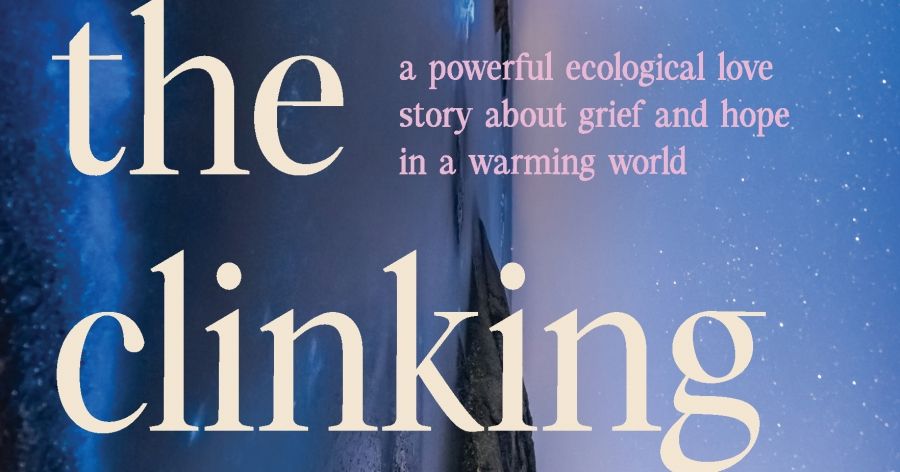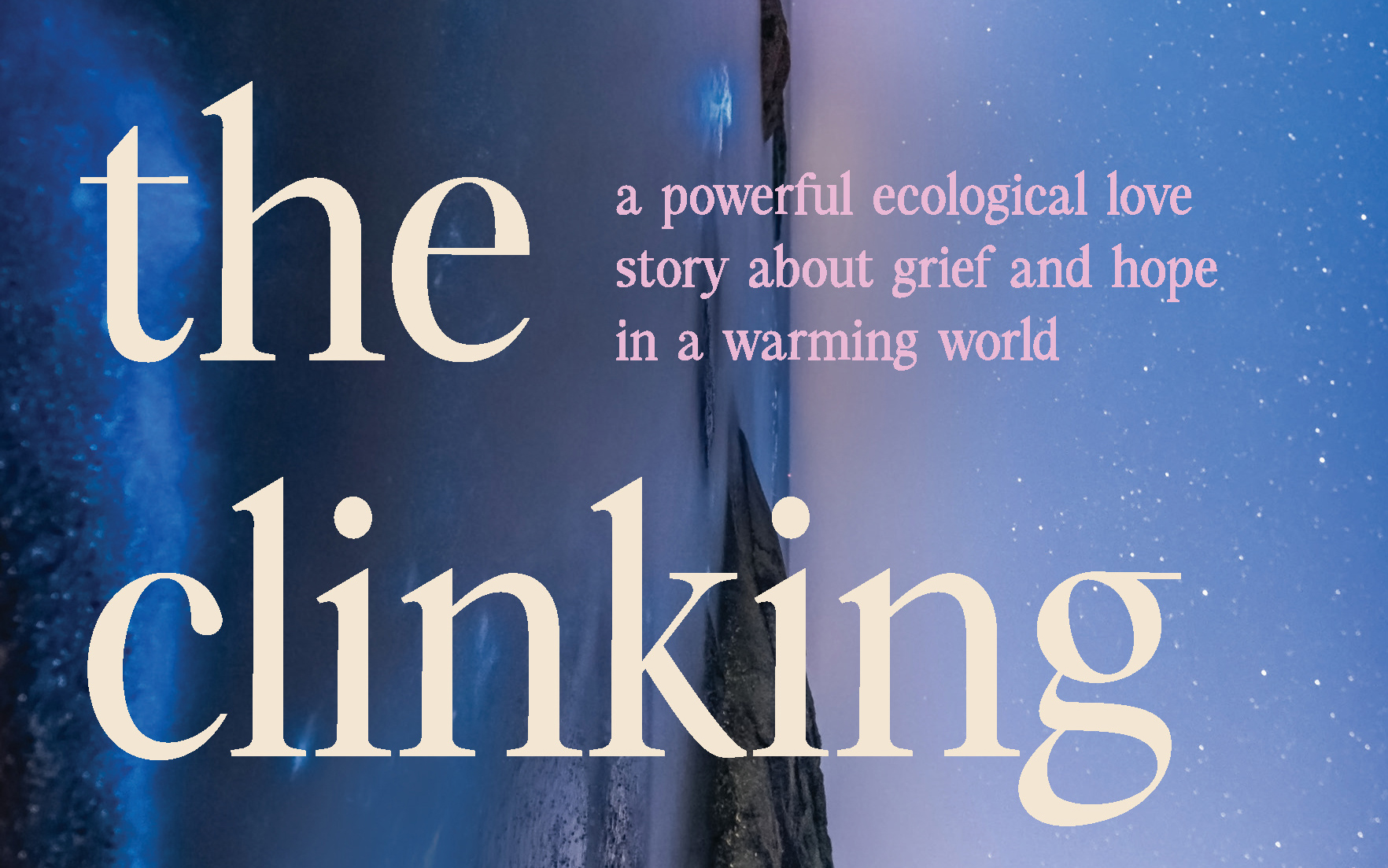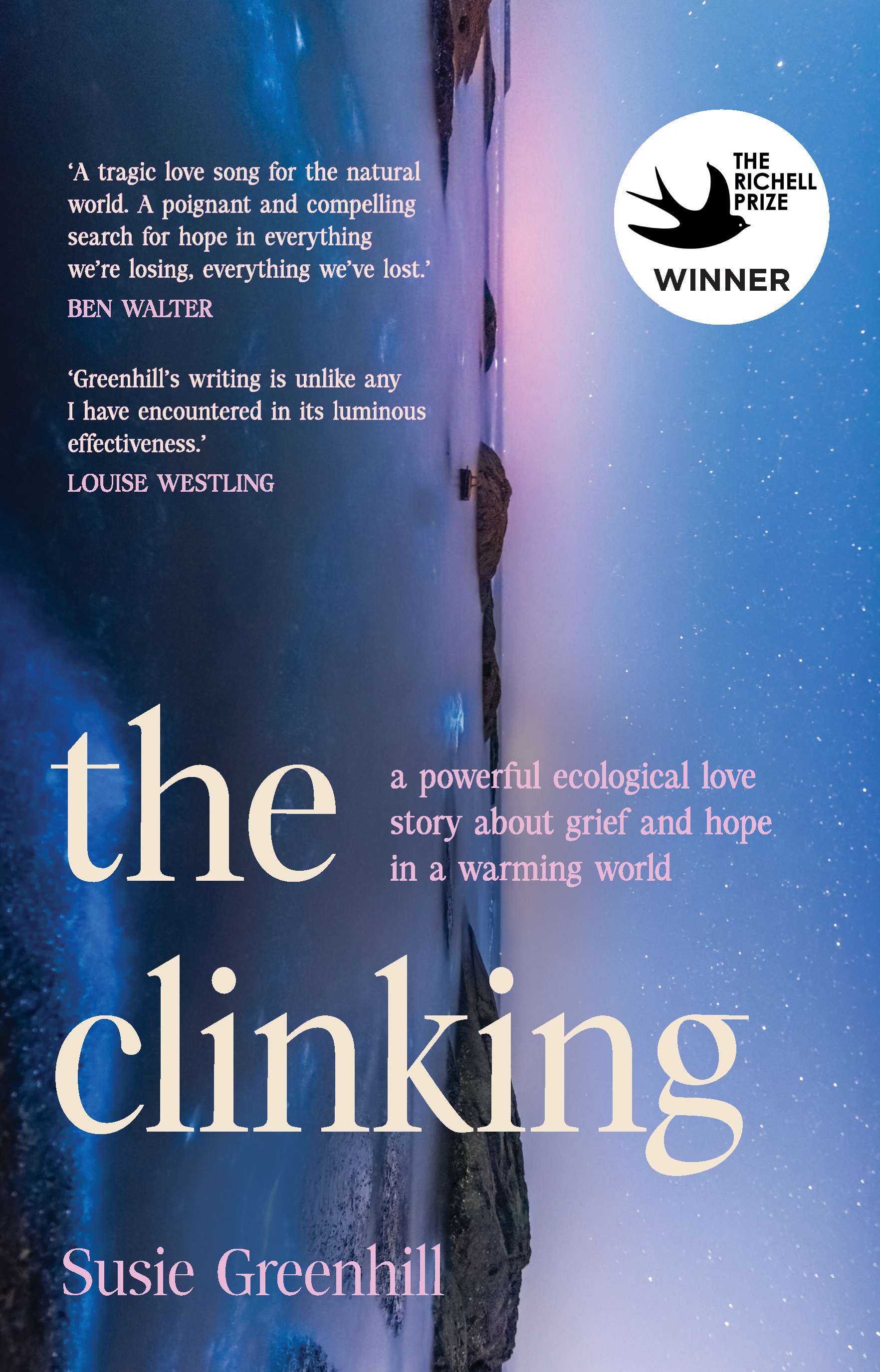
- Free Article: No
- Contents Category: Fiction
- Review Article: Yes
- Article Title: Irrational, beautiful hope
- Article Subtitle: Climate fiction for our present reality
- Online Only: Yes
- Custom Highlight Text:
Rising seas, mega fires, drought, melting glaciers, and animal extinctions are not exactly the stuff of fiction in 2025. But these themes are also precisely the domain of fiction that speaks of the climate at this moment in the planet’s history, as Susie Greenhill’s début novel, The Clinking, demonstrates with its tender yet insistent call for us to pay attention to this fragile world.
- Featured Image (400px * 250px):

- Alt Tag (Featured Image): Gus Goswell reviews ‘The Clinking: A powerful ecological love story about grief and hope in a warming world’ by Susie Greenhill
- Book 1 Title: The Clinking
- Book 1 Biblio: Hachette, $32.99 pb, 294 pp
- Book 1 Cover Small (400 x 600):

- Book 1 Cover (800 x 1200):

- Book 1 Readings Link: https://www.readings.com.au/product/9780733652332/the-clinking--susie-greenhill--2025--9780733652332#rac:jokjjzr6ly9m
The Clinking is set in Lutruwita/Tasmania, where Greenhill lives, in a climate change-ravaged near future. It tells the story of journalist Elena and her husband, Tom, an ecologist who is desperately working to research and prevent climate-related wildlife extinctions, and their young daughter, Orla. Tom’s scientific work, conducted in the maelstrom of twin climate and biodiversity crises, has consumed him. Despite his love for Elena and Orla, he has become emotionally distant, working long hours at the office to devise conservation strategies that are obsolete even before they can be applied in the field, crying at home as he looks at reports of mass coral bleaching, and struggling to insulate his daughter from the grief rising inside him. Elena tries to break through Tom’s barriers. One morning he is not in the bed next to her. Weeks pass and Tom doesn’t reappear.
From here, The Clinking’s central plotline follows Elena, Orla, and their friend Kit as they escape the social unrest and violence of Hobart in the aftermath of a destructive wind storm and hike into Tasmania’s remote south-west, searching for answers in the wild landscapes around Lake Pedder that Tom loved deeply and where they still dare to hope he might be found.
As Elena continues the search, Greenhill employs flashbacks and alternating timelines to reveal more about Tom and Elena’s relationship. We see how the decline of the natural world overwhelms Tom. He, of course, is not the only person in this altered world to be deeply affected by what they are living through. As new characters are introduced, Greenhill presents a diversity of human responses to grief, loss, and threat in an era of climate catastrophe.
Every chapter opens with an italicised vignette of disruption and loss in nature, often occurring outside the lived experience of the characters. While lyrical, the disconnection of these punctuating passages from the main narrative means that they don’t always amplify the novel’s main narrative in the way they might have been intended to, even after multiple re-readings.
The Clinking joins the growing realm of Australian climate fiction. Authors including Tim Winton (Juice, 2024), Inga Simpson (The Thinning, 2024), James Bradley (Clade, 2015), and Alexis Wright (The Swan Book, 2013) have used their fiction to depict advanced climate change and its implications for humanity, our social structures, and the natural world. Climate fiction is often overtly dystopian, set in a future that bears only vague resemblance to the reader’s present reality. The Clinking also takes place over our horizon, but only just, occurring in a disturbingly recognisable place where
the fears that had been cast into the future for so had materialised before them in the present – in the swelling of the oceans, in the capriciousness of the skies above their clear-aired, estuarine city, in the heat-death of forests, and the fires that burned through the ancient alpine plains.
Knowing that The Clinking was published (in February 2025) as devastating Tasmanian bushfires threatened thousand-year-old trees that have never known such a furnace makes it even more disquieting.
The novel’s verisimilitude is affirming as well as disturbing. A broad readership of nature lovers, news audiences, parents, grandparents, and doomscrollers will recognise their own spoken and unspoken anxieties in this novel, and perhaps even whole phrases from their conversations. Characters speak of their fears as they observe the changes around them and grieve for how they also have been altered. They discuss the merits of activism and direct action and debate the ethics of bringing children into their world. In a reflective moment with Elena next to the ocean Tom says, ‘I wonder sometimes if I hold on too tight to what’s lost.’ Years later Elena herself wonders, ‘Maybe it’s better to forget, to never know what we’ve lost. Maybe I should be teaching Orla not to love.’
There is much grief in this story, especially as the reader comes to understand that Tom’s emotional withdrawal and eventual disappearance were preceded by a heartbreaking family tragedy. There is also love in The Clinking, and much to love about it. There are owls, wombats, wallabies, freshwater crayfish, ghost fungi, butterflies, bioluminescence, and human characters worth caring about. In one scene before Elena and Tom became a couple, they celebrate the wedding of two friends. Tom, a few drinks into his evening, addresses the newlyweds: ‘While the rest of us are stumbling around in the dark, you two, despite everything – in spite of every fucking thing – have chosen hope. Irrational, beautiful, hope ... I kind of envy you that.’
There is hope in this novel, more often grim than beautiful. It is a stubborn hope that empathy and our search for meaning still matter on the other side of ecological tipping points. Some readers will recognise that kind of hope and will find new determination to hold to it, despite everything.


Comments powered by CComment